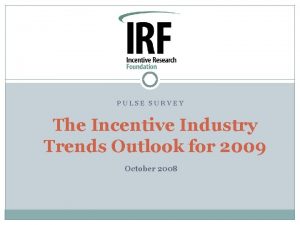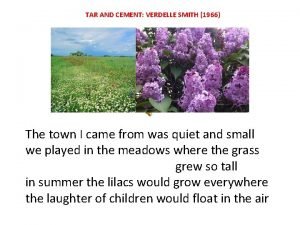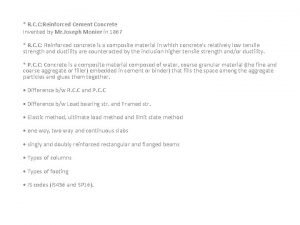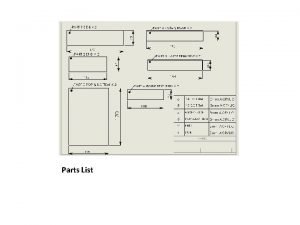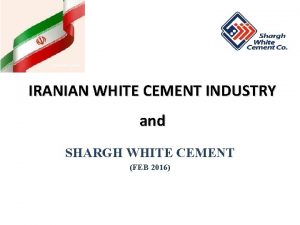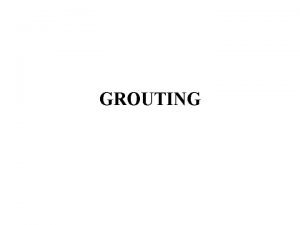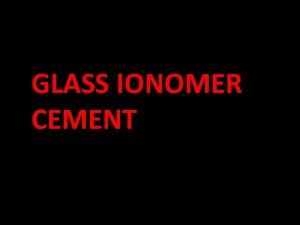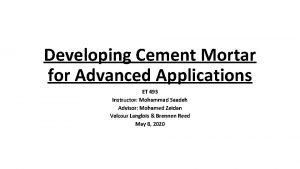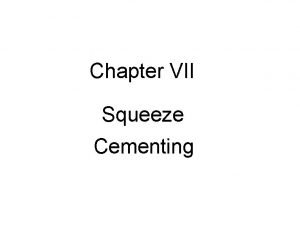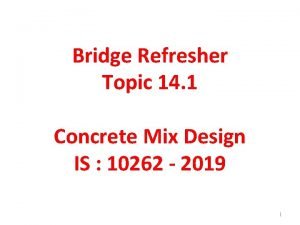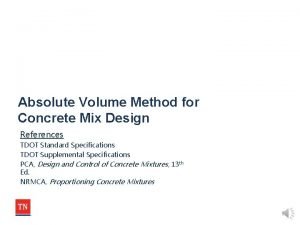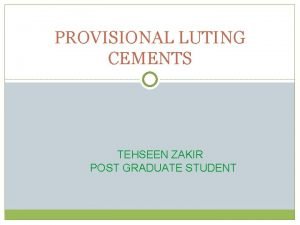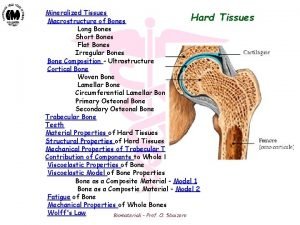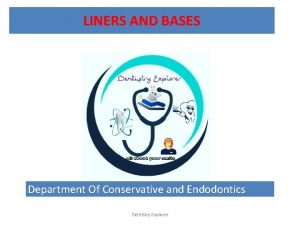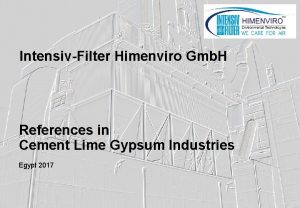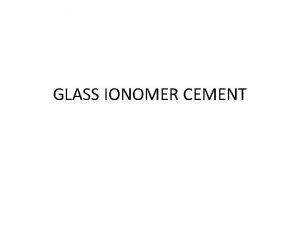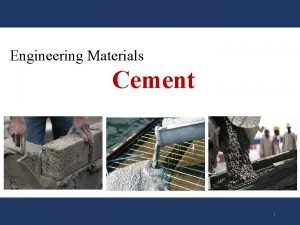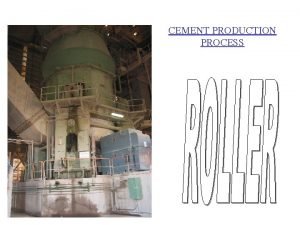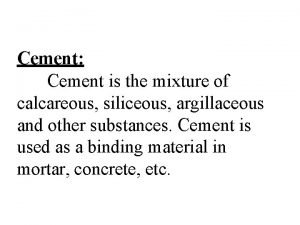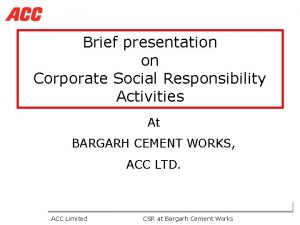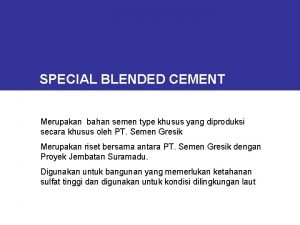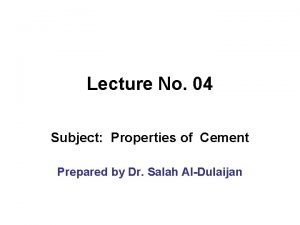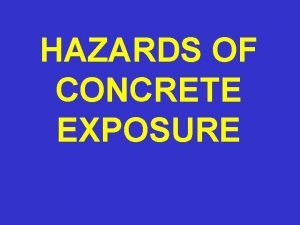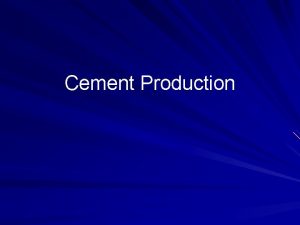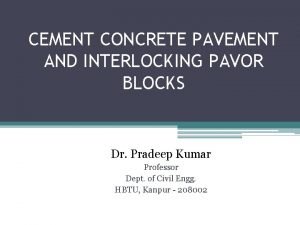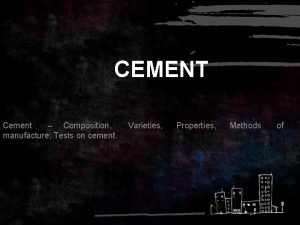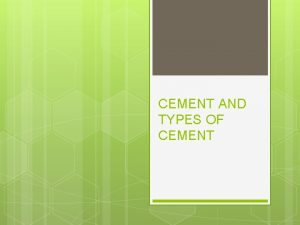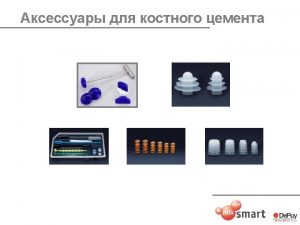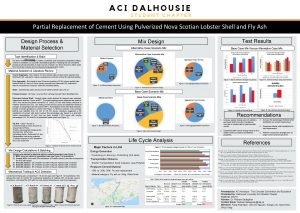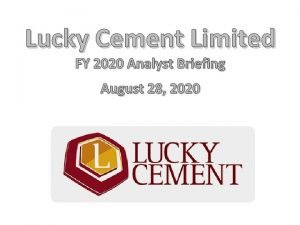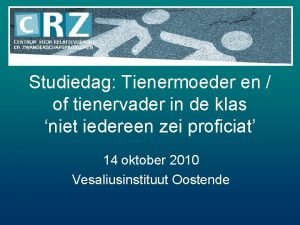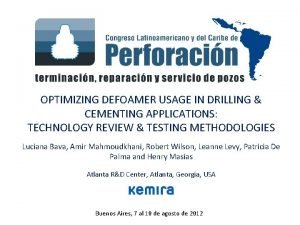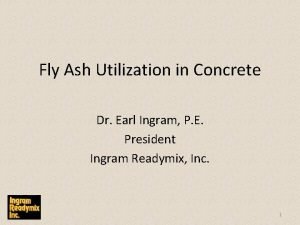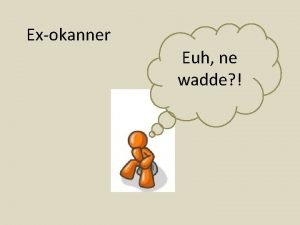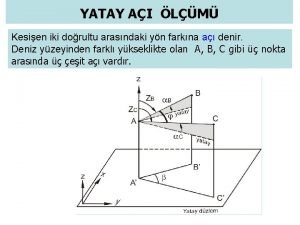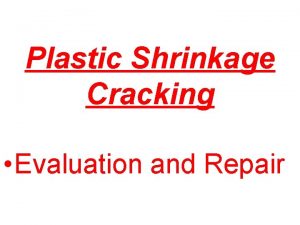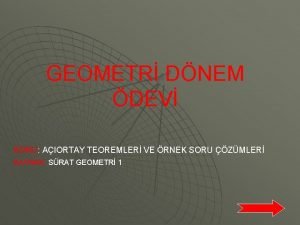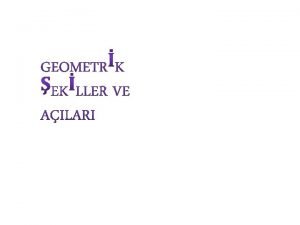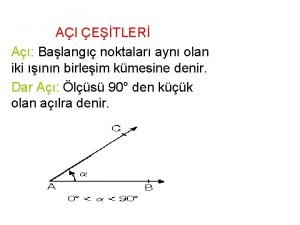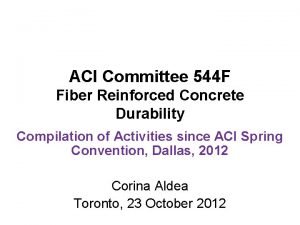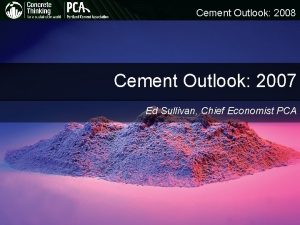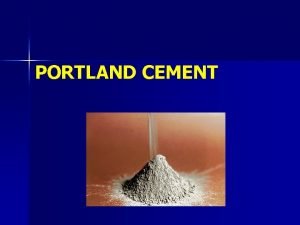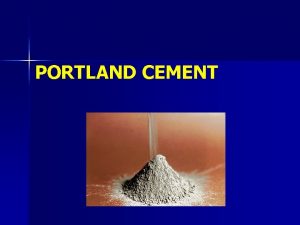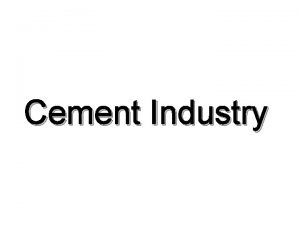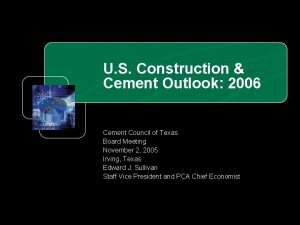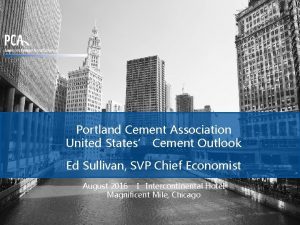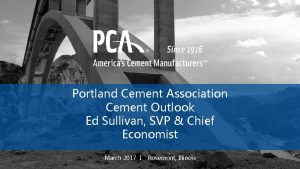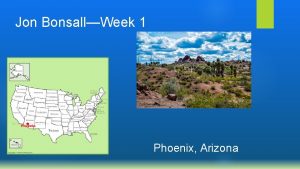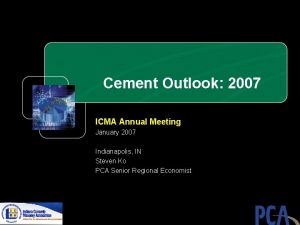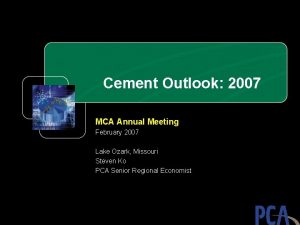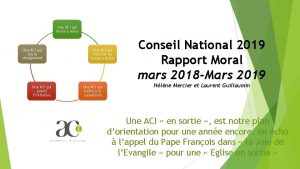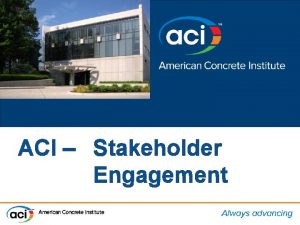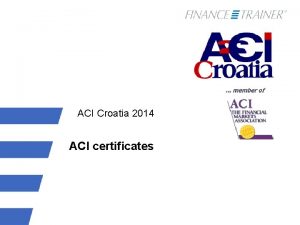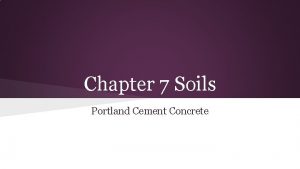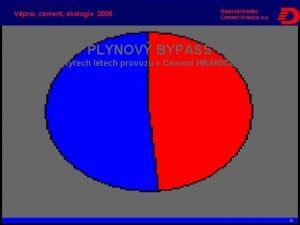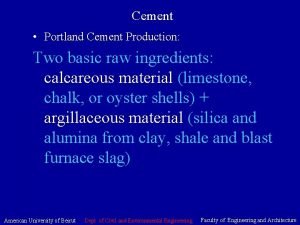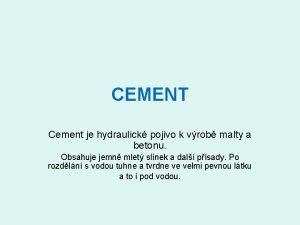Cement Outlook 2007 ACI Arizona Chapter Phoenix Arizona






































































- Slides: 70

Cement Outlook: 2007 ACI Arizona Chapter Phoenix, Arizona Edward J. Sullivan Staff Vice President and PCA Chief Economist For the Second Straight Year Awarded Most Accurate Forecaster (GDP) by the Chicago Federal Reserve

Introduction

Economic Comfort Index * 1996=100 Most Favorable Economic Conditions Since the 1960’s • Combines Real GDP Against the Levels Interest Rates, Inflation and Unemployment

Key Near Term Economic Issues n Oil Prices: n n Inflation: n n Resumption in increases? Housing Decline: n n Supply side generated – will it subside enough to the Federal Reserve’s criteria Interest Rates: n n Is the recent rundown sustainable? Hard landing or false read of data? Job Creation: n Can we maintain current level of unemployment?

Energy Outlook

Oil Price Outlook n Oil Prices are declining as projected. n n n -7 +20 Japan’s Economic Recovery Stronger Asian Demand: China & India -10 +30 Middle East Uncertainties, Nigeria, Venezuela Iran & Uranium Enrichment OPEC Actions n n Projected Supply Disruptions Continue n n Retreat to 2002 levels not going to happen. Strong International Demand n $ Per Barrel, West Texas Intermediate $60 per barrel target? 2006: $65. 85 per barrel WTI 2007: $60. 30 -10 +50 -9 +60

Gasoline Price Impact n Gasoline Prices Topped $3 n Seasonal patterns suggest September peak. n Declines incorporated. n Gasoline Purchases To Account for 5. 3% of Total Consumption. n 2005: 4. 2%, 2004: 3. 6%, 2003: 3. 3% n Steals $125 Billion from Consumer Spending Compared to 2005 n Rising gasoline prices stole $75 Billion in 2005 and $50 Billion in 2003 Estimated Annual Gasoline Spending Per Vehicle

Heating Oil Impact n Peak Heating Season Begins In November n Slight Retraction from High 2005 Levels. n $700 increase over “normal” 2004 levels. n n 2005 impacts minimized by mild winter conditions. Assumes “Average” Winter. n Adverse impact increases with severity of winter. 80% of Total Heating Bills Occur Nov - March $2323 Duplicates 2005 Winter Average Winter Estimated Seasonal Home Heating Costs Per Home

Inflation Outlook

Inflation Outlook Annual Percent Change, CPI Urban n Higher Energy Prices Structure n n n Labor Costs Rising n n Unemployment Rates Decline below 5% Workers Cautious in Pushing for Increases Productivity Growth Easing Structurally Weaker Dollar n n Still Cyclical…but… Stronger Asian Demand: China & India Trade Deficit Widens Structurally Higher Transportation Costs n Energy & Logistical bottlenecks n 2006: 3. 4% 2007: 2. 7% n Supply Side Inflation: Tougher to reduce. Projected

Employment Outlook

Labor Market Outlook Monthly Net Job Creation, Payroll Survey n Job growth slowing from 1 st Quarter average of 176, 000 net new jobs per month to 2 nd Quarter averaging 110, 000 net new jobs per month. n 2006: 1. 7 million 2007: 1. 6 million net new jobs creation n 2006 -2008 Job creation: Estimated at 4. 7 million jobs 2006 -2008, compared to 6. 1 million in Spring forecast. n Unemployment rises to 4. 8% year end. 2007: 5. 2% n Slow down in trend of accelerating wages by 2008. Projected

Interest Rate Outlook

Federal Reserve Policy Actions Federal Funds Interest Rate, Annual Percentage Rate n Overall Economy & Job Growth Slowing. n Inflation a growing concern. n n Nature of inflation: Supply Side. Improvement may disappoint Fed Expectations. Target rate = 2. 0% n Dilemma: Inflation or Growth? n Do not count out further Fed Tightening. n Federal Funds to 5. 5% Projected

Total Public U. S. Debt …. Approaching $10 Trillion Total Public Debt, Million $ CBO Estimate: Debt Increases $1. 1 Trillion by 2010

Net Foreign Purchases: US Bonds & Notes $ Millions Mortgage Rate China May Diversify its Portfolio Away from U. S.

Interest Rate Conclusions: 2007 -2010 n Higher Inflation Premiums n Add to “Real” Rates n n Federal Reserve n n n New Fed Chairman demonstrates resolve Favors Inflation Targeting (2%) Larger Public Demand for Funds n n Middle East New Orleans n Private Demand for Funds Increase n Foreign Supply Slows n n n Weak Dollar lower foreign returns Competing Investment Instruments Strength in Equities Draws Funds from Bond Market

Economic Outlook

Snap Shot of Economic Activity Consumption acts as the anchor for US economic activity. Any retrenchment in consumer spending will lead to slower economy-wide growth rates

Consumer Worksheet n Pay Increase Averages 3. 5%. n Health Insurance Premiums Rise 7%-11%. n State and Local Property Taxes Rise. n n Reassessments based on high home appreciation Energy Prices Take a Large Bite. n Even in context of recent improvement. n Inflation Running near 3% n Interest Rates Rising in Context of Record Consumer Debt n Tapping Home Equity Not as Viable As In the Past n Slowdown in Job Creation n Consumer Growth Rate Under Pressure

Consumer Spending Outlook n Consumer spending accounts for more than 2 out of every 3 dollars created by U. S. economy. n Slower Job & income growth implies slower growth in consumer spending. n Higher Oil prices, inflation and rising interest rates dampen improvement in sentiment. n Affordability erodes, but high from historical perspective. n Less home refinancing activity & growth in mortgage ARMs dampen n n Slower Automotive Spending Consumer Spending Grows below 3. 0% next two years. Downside risk.

Investment Spending n Near term outlook remains positive…but less so than six months ago. n Fixed, Non-residential investment has recorded strong growth during last two years. n n Economic growth improves expected return on investment. Funds availability n n n Risk premiums reduced n n Internal Funds: Profitability External Funds: Favorable rate environment Small borrowers – easier credit terms and conditions. Going Forward: n n Slower economic growth, higher costs reduce expected ROI. Slower profit environment adds extra does of caution in spending for investment. Nonresidential Fixed Investment, Annual Percent Change

Economic Outlook : Real GDP Growth Real GDP Annual Growth Rate Risks On Downside: 2008 2006: 3. 1% 2005: 3. 5% -----2005 ----- 2008: 2. 4% 2007: 2. 6% -------2006 -------2007 -------2008 -------

Economic Growth Conclusions n Economic growth slows n Growth rate still above historical average n Challenges lie ahead but should be overcome with sustained growth in labor markets n Downside risks arise to consumer spending from housing/mortgage financing sector n What to Watch in 2007: n Job Gains +100, 000 per month n Consumer Debt Burdens: Flattening 1 st half, Improvement 2 nd half.

Construction & Cement Outlook Overview

Total Construction Billion 1996 $ 2005: 3. 7% Growth 2006: YTD: 2. 3% Growth

Changing Composition of Construction Spending 2006 -2010 2001 -2005 Low Interest Rates, Weak Economy n Growth Leader: Residential n n n State Tax Revenues Hurt by Anemic Economic Growth Laggard: Nonresidential n n Low Interest Rates Public n Rising Interest Rates, Strong Economy Weak Economy Growth Leader : Nonresidential n n Public n n Strong Economy State Tax Revenues Recovery Due to Strong Economic Growth Laggard : Residential n Rising Interest Rates

Cement Intensities

Composition Of Cement Growth: Construction Activity Vs Cement Intensity Growth Annual Percent Change, Real Put-In-Place Construction & Cement Intensity Construction Activity Growth Cement Intensity Growth

Composition Of Intensity Growth Preliminary Estimates* Changes In Construction Composition Changes In Regional Composition Changes In Relative Prices *Based on Forthcoming PCA Economics Report Changes in SCM/Other

Cement Intensity Outlook n Competitive price position Vs other building materials n Composition of construction n Nonresidential intensities are cyclical n Code changes: hurricane n Green environment n Product n SCM’s steal some intensity growth n Fiscal healing: local roads higher portion of construction $ Annual Growth Metric Tons Per Real Construction $ Projected Five Year Average

Residential Construction Single Family

Composition of Arizona Cement Consumption n Residential: 39% n Nonresidential: 17% n Public: 44%

Strength in Starts More Than Low Rates… The Cyclical Upside: 2001 - 2005 n Low mortgage rates key factor in single family starts over past few years. n Emergence of exotic mortgages also a key factor…particularly in strong home appreciation environment. n Easy credit conditions contributed to strong home-buying environment. n Speculators add froth to market in light of strong appreciation rates. The Cyclical Downside: 2006 - 2009 n Mortgage rates rising. n Exotic mortgages losing favor. n Defaults and delinquencies cause a deterioration in credit quality and a tightening of credit conditions n Speculators reduced/disappear in lower appreciation rate environment

Mortgage Rates: 30 Year Conventional Annual Growth Rate, 30 Year Conventional Peak to Trough 294 Basis Point Decline Last 12 Months Reflect a 100 Basis Point Increase

Affordability Index Mountain West North Central East North Central New England Middle Atlantic Pacific South Atlantic West South Central East South Central Affordability Ratio Most Affordable 2 nd Tier 3 rd Tier 4 th Tier Least Affordable

Home Appreciation Rate Annual Growth Rate, Median Home Price 6. 6% Appreciation 1 st Quarter Improves Affordability: Stronger 2009/2010 Outlook

Profile: Single Family Buyer 2000 Estimated 2006 Coastal and Resort Areas: Double the National Average For Speculators Note: Speculators Are 1 st to Leave the Market

Growing Home Price & Income Gap Annual Growth Rate Comparison Home Prices Household Income

Emergence of Exotic Mortgages Interest Only Loan Share of Sub-Prime Market Share by Loan Count: Striped Yellow Share by Principle Balance: Solid Green Note: Sub-Prime accounts for 36% total mortgage market

Sub-Prime Mortgage Resets Total Loans Scheduled for Reset Period of Emerging Trouble

Arizona: Single Family Permits Percent Change YTD: -30% Arizona United States Projected: -12%

Inventory Draw Required Homes on Market/Monthly Selling Rate Highest Level Since 1997 Inventory Draw Required Ten Year Average Inventory Build Required Arizona: 30, 000 unit required burn-off

SF Inventory Adjustment Outlook (000) Units 1997 -2005 Average Arizona: 30, 000 unit required burn-off, sharp decline in 2006 helps burn-off, more needed

Single Family Housing Starts (000) Units Downside Risks Mortgage Bankers Association National Association of Realtors NAHB

Arizona: Residential Outlook n Y-O-Y Sales decline continues 1 st half 2007…gradual easing in terms of percentage declines n Y-O-Y Sales increase materialize in 2 nd half. n 13% decline 2007 n Burn off of inventories continues through most of 2007. n Delays recovery in starts activity until 2008

Nonresidential Construction Overview

Composition of Arizona Cement Consumption n Residential: 39% n Nonresidential: 17% n Public: 44%

Nonresidential Construction Annual Growth Rate +9. 2% 2006 First Half 7. 6% Projected 2006

Nonresidential Outlook n Underlying nonresidential drivers improving. n Despite large percentage gains for 2006, most markets weak from historical perspective. n Past cyclical peak not realized. n Slower growth outlook depresses expected ROI and tempers recovery. n High material costs reduce growth. n Increasing cement intensities reinforce construction activity gains. n Institutional nonresidential gaining momentum; less sensitive to slower growth environment Billion Dollars, Real 1996 $ Projected

Mississippi: Nonresidential Employment 1996=100 United States Mississippi

Alabama: Nonresidential Employment 1996=100 Alabama United States

Florida: Nonresidential Employment Annual Percent Change Florida United States

Public Construction

Composition of Arizona Cement Consumption n Residential: 39% n Nonresidential: 17% n Public: 44%

Public Construction Outlook: State & Local Share of Public Construction Percent of Total Public Construction Spending

Public Construction Outlook Billion $ State Surplus/Deficit, NIPA n 93% of public construction performed at state/local level. n State/Local fiscal problems fading. n Revenue growth improves with economy and job growth. n Surpluses will re-emerge. n Pent-up demand released. n Highway Bill adds strength. n 2006: +4. 8% 2007: +5. 5% n Note: 2005: +1. 9%

Public Construction Outlook: State Deficit Estimates Fiscal Year 2004 Mountain $1. 0 West North Central $. 12 $. 85 New England $0 $2. 4 $. 16 $. 05 $1. 3 $0 $. 36 $38 Pacific $. 41 $3. 6 $. 4 $. 98 $1. 0 $. 2 $0 $. 3 DE $. 2 MD $. 85 $1. 1 $2. 0 $. 22 $. 09 $. 5 West South Central $. 14 South Atlantic $. 6 East South Central District of Columbia $. 4 $. 74 $3. 7 0 -9% $. 25 $2. 0 KEY Dollar figures, in billions, indicate amount states had to save to balance 2004 budget. Deficit as percentage of budget 10 -19% 20 -29% NH $. 15 MA $3. 0 RI $. 17 CT $1. 9 Middle Atlantic $. 75 $1. 7 $. 11 Secondary Sources: Nat’l Conf. of State Leg. , Center on Budget and Policy Priorities, Nat’l Assn. of State Budget Officers, Calif. Budget Project NJ $4. 6 $2. 4 $. 08 $1. 5 Primary Source: Newsweek July 28, 2003 $. 49 $9. 3 $2. 0 $. 38 VT $. 03 East North Central 30 -39%

Public Construction Outlook: State Deficit Estimates Fiscal Year 2005 Mountain $0 West North Central $0 $0 New England $0 $. 19 $0 $. 17 $. 9 $0 $. 34 $. 6 $. 3 $. 6 $. 9 $1. 1 $0 $0 $. 3 $0 $. 71 Primary Source: Center on Budget Policy and Priorities Feb / 04 Secondary Source: National Association of Budget Officers No available data $. 62 $. 9 East South Central Deficit as percentage of budget 10 -19% District of Columbia $. 14 $. 5 South Atlantic $. 5 West South Central 0 -9% $. 93 $. 8 $0 $0 DE $0 MD $. 74 $. 12 $. 2 NH $0 MA $1. 5 RI $. 19 CT $. 2 Middle Atlantic $0 $0 $15 Pacific NJ $5 $0 $2 $0 $. 17 $5. 1 $. 0 $. 21 VT $0 East North Central 20 -29% $0 KEY Dollar figures, in billions, indicate amount states had to save to balance 2005 budget. 30 -39%

Construction Costs Annual Growth Rate +7. 2% 2006 First Half

Market Conditions

Composition of Arizona Cement Growth: 2003 -2005 n Total: +1. 4 MMT n Residential: +0. 310 MMT (22%) n Nonresidential: +0. 340 MMT (25%) n Public: +0. 730 MMT (52%)

Arizona: Portland Cement Consumption Percent Change YTD: +2. 0% Projected: +0. 8% Arizona 2007: +0. 4% United States Decline based on housing. 4. 7 MMT Market

Cement Supply Survey Summer 2005 No Shortage Tight Supplies Spot Tight Supplies

Import Volume & Freight Rates Freight $ Per Ton, Handymax, Asia-Gulf Import Volume, Million Metric Tons 2006 YTD: 42. 4 MMT 2005: 33. 6 MMT

Cement Supply Survey Summer 2006 No Shortage Tight Supplies Spot Tight Supplies

Market Balances: Trend Adjusted Supply Vs Consumption Green: Domestic Yellow: Imports Inventory Adjustment Green: Inventory Red: Day Supply

Import Volume & Freight Rates Freight $ Per Ton, Handymax, Asia-Gulf Import Volume, Million Metric Tons

Conclusions

Cement Outlook: 2007 ACI Arizona Chapter Phoenix, Arizona Edward J. Sullivan Staff Vice President and PCA Chief Economist For the Second Straight Year Awarded Most Accurate Forecaster (GDP) by the Chicago Federal Reserve
 Cientista phoenix arizona
Cientista phoenix arizona Outlook incentive outlook
Outlook incentive outlook Cement chapter in civil engineering
Cement chapter in civil engineering Tar and cement 1966
Tar and cement 1966 Vesuvius refractory product data sheet
Vesuvius refractory product data sheet Rcc reinforced cement concrete
Rcc reinforced cement concrete Liquid solvent cement
Liquid solvent cement Manufacture of portland cement
Manufacture of portland cement Shargh white cement
Shargh white cement Suspension grouting
Suspension grouting Glass ionomer definition
Glass ionomer definition Mortar to water ratio
Mortar to water ratio Squeeze cementing
Squeeze cementing Vicatt
Vicatt Non hydraulic cement
Non hydraulic cement Standard deviation for concrete
Standard deviation for concrete Absolute volume formula
Absolute volume formula Tensol cement advantages and disadvantages
Tensol cement advantages and disadvantages Setting reaction of zinc phosphate cement
Setting reaction of zinc phosphate cement Wolff's law
Wolff's law Zinc phosphate cement setting reaction
Zinc phosphate cement setting reaction Dalmacija cement
Dalmacija cement Manipulation of gic
Manipulation of gic Classification of cement
Classification of cement Vertical
Vertical Extra rapid hardening cement setting time
Extra rapid hardening cement setting time Bargarh cement works
Bargarh cement works Semen sbc
Semen sbc Komprimálható
Komprimálható Reco cement
Reco cement Klas cement
Klas cement Cement steel silo
Cement steel silo Fc meaning in concrete
Fc meaning in concrete Vicat apparatus
Vicat apparatus Concrete dust inhalation
Concrete dust inhalation Portland cement definition
Portland cement definition Interlocking cement concrete pavement
Interlocking cement concrete pavement Manufacture of cement
Manufacture of cement In cement hardening process instants are very important
In cement hardening process instants are very important Cement sneller laten drogen
Cement sneller laten drogen Sorel cement
Sorel cement Cement restrictor inserter
Cement restrictor inserter Klas cement
Klas cement Najmat al samawa company for cement industry
Najmat al samawa company for cement industry Klas cement
Klas cement Canaliculi ossium
Canaliculi ossium Cement defoamer
Cement defoamer Ingram ready mix concrete prices
Ingram ready mix concrete prices Okanner
Okanner Klas cement
Klas cement Brozebottenziekte
Brozebottenziekte Antea cement
Antea cement Klas cement
Klas cement Yatay açı
Yatay açı Silier cisim
Silier cisim Acı koşulsuz uyarıcı mı
Acı koşulsuz uyarıcı mı Aci 224
Aci 224 Aci organigramma
Aci organigramma 1 ile bölünebilme kuralı
1 ile bölünebilme kuralı Ters açı tanımı
Ters açı tanımı Açıortay teoremi
Açıortay teoremi Aci vpod
Aci vpod Geometrik şekiller ve isimleri
Geometrik şekiller ve isimleri ölçüsü 360 derece olan açıya ne denir
ölçüsü 360 derece olan açıya ne denir Iç ters açılar
Iç ters açılar Doğru açı
Doğru açı Sifei aci
Sifei aci Aci sosi pe vremuri
Aci sosi pe vremuri Aci red shield
Aci red shield Aci 544
Aci 544 Cisco nia future releases
Cisco nia future releases

